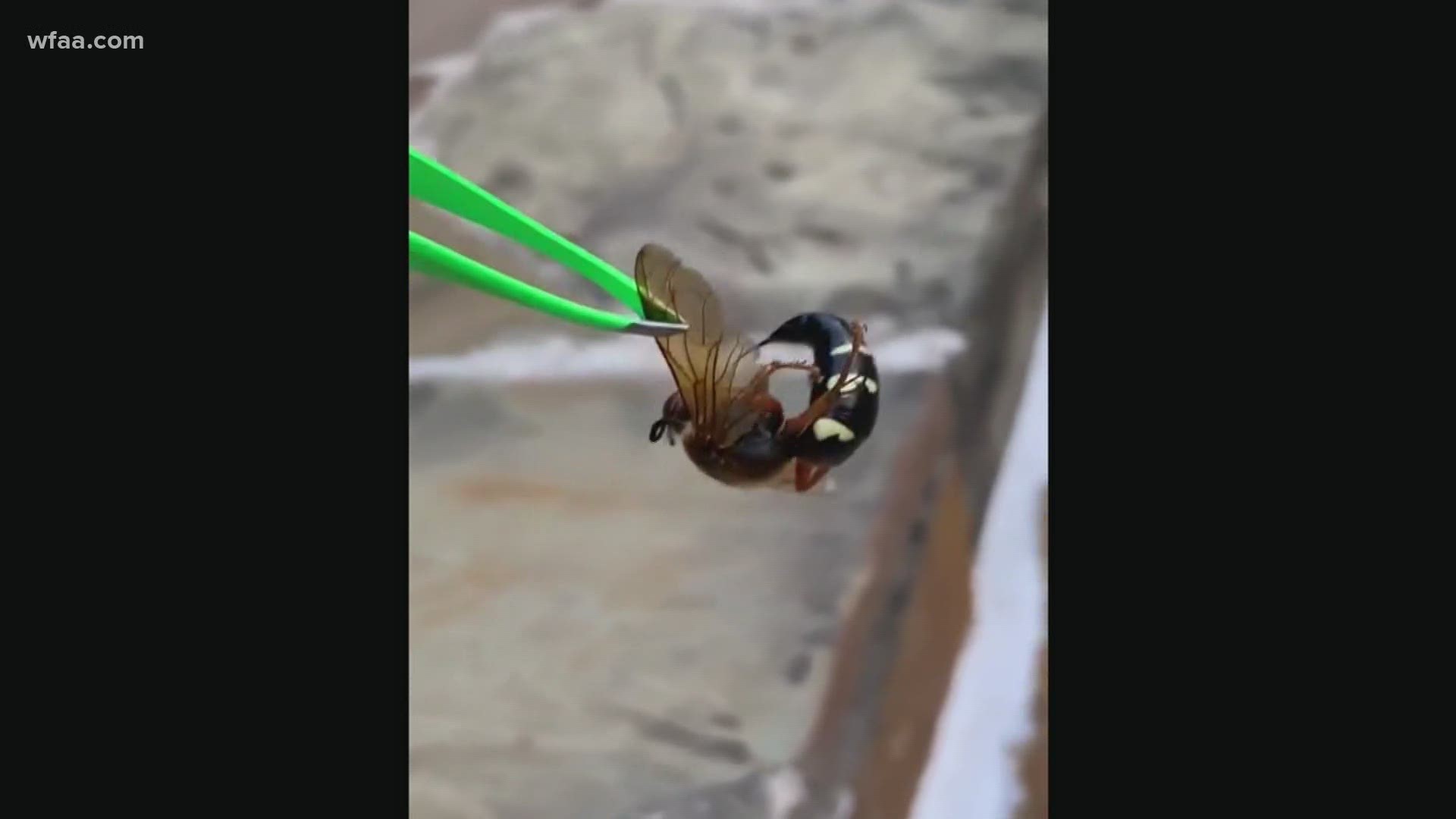DALLAS — A few months ago, Americans learned that murder hornets had made their way to our country from Japan.
The story went viral as people worried about an invasion that could decimate an already-struggling bee population.
Since then, we've gotten some questions from viewers who have found large hornet-like creatures and wondered if they're murder hornets (also known as Asian giant hornets).
But rest assured— no murder hornets have yet been sighted in Texas. So far, they seem to be isolated to the Pacific Northwest.
Instead, you're probably seeing cicada killers.
A member of the wasp family, its scientific name is sphecius speciosus. The insect is active during the summer, particularly July and August, according to the Texas A&M Agrilife Extension.
It's also one of the largest wasps humans will encounter, TAMU says.
Cicada killers generally have rusty red heads, thoraxes and wings. Their bodies are usually black in color, with yellow bands on their abdomen.
The wasps attack, sting and paralyze cicadas before carrying them back to their nests to provide food for their larvae, which only feed on cicadas.
They nest in sandy areas, where the females deposit an egg on a paralyzed cicada and seal it. A single generation is produced each year, according to TAMU.
Adults, however, don't eat the cicadas; they feed on flower nectar.
Although female cicada killers are capable of stinging, they're rarely aggressive towards humans or animals. Males, though they cannot sting, may be more aggressive.
Have a question about something you've seen? Download the WFAA app and send us your photo through the "Near Me" map.

